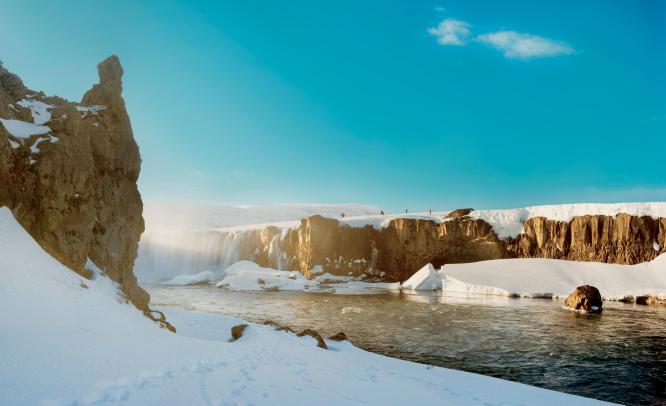In the aftermath of the financial crisis, the boom in the tourism sector has had a major economic impact
June 10, 2015: In the past 20 years, the Icelandic economy has gone through a wild boom and bust roller coaster ride. The economy is very small by most comparisons; the number of inhabitants is only 325,000 and total domestic product is the smallest within the OECD. Despite its small size, the Icelandic economy is resilient and gross national income per capita is above the EU average. Iceland’s prosperity is supported by rich natural resources in terms of abundant clean hydro and geothermal energy and diverse marine stocks, and a highly skilled workforce.
The economy was hard hit by the international financial crisis when the entire banking system collapsed in the span of one week in October 2008. Iceland was hit harder than most other economies by the crisis for a combination of reasons: an overgrown banking sector whose total balance sheet had expanded to almost 11 times the GDP, domestic overheating of the economy due to large-scale investment in the power intensive sector, a property bubble with an 80% rise in real estate prices between 2004 and 2007, an overvalued currency due to international carry trade and rapid expansion of Icelandic cross-border banks overseas. The Icelandic economy was plunged into a sharp recession. Stock prices fell by 85%, housing prices fell by 38% in real terms, private consumption fell by 16% and capital formation by 58%, while exports grew by 11%.
The recovery
After an 11% dip in GDP, the economy started growing again in Q2 2010. The recovery was spurred by a substantial boom in the tourism sector, which has grown by 68% over the years 2009-2013 in terms of foreign tourist arrivals. Tourism has become the main source of export revenue followed by marine products and aluminium.
The current economic outlook is favourable. While inflation was stubbornly high over the past few years, it is now in line with the central bank’s target. Unemployment is down to 5%, the national currency (króna) is stable, a public deficit has been transformed to a small surplus, the current account is positive and corporate and household debt has decreased substantially. The IMF projects a 3% annual average GDP growth in 2014 and 2015, well above the average for other advanced economies.
Banking sector on stronger foundation
The task of rebuilding the financial sector has also been successful. The three main commercial banks in Iceland, which were built on the domestic operations of the failed cross-border banks, now have a very strong balance sheet. A survey by the Banker published earlier this year shows that of the world top 1,000 banks, the Icelandic banks rank from 397th (Landsbankinn) to 595th (Arion Bank) in terms of overall strength. In terms of financial strength (CAR-ratio), Landsbankinn now ranks number 20 in the world and is the highest ranked bank in western Europe with a CAR ratio of 20.6%.
There are, however, still some legacy issues unresolved from the financial crisis. Relaxing the temporary capital controls introduced to curb the threat of capital flight following the collapse of the banking system is the most important. The relatively strong position of the Icelandic economy today has increased expectations that substantial steps will be taken towards easing the controls in the coming months.
Boom in tourism
The Icelandic economy benefits from a number of positive fundamentals; fish stocks are healthy and well managed, the nation has plenty of renewable energy resources, the pension system is strong and well-funded and the nation’s age structure is favourable. The nation’s long-term outlook, after its recent struggles, is therefore positive.
In the aftermath of the crisis, the boom in the tourism sector has had a major economic impact and has likely been the most important single driver of the recovery. From 2009 to 2013, export revenues from tourism increased by ISK 122 billion, or from 10% of GDP in 2009 to 15% of GDP in 2013. There are no signs of this trend slowing down.
For the first 10 months of 2014, foreign tourist arrivals increased by 23% Y/Y and we project that export revenues from tourism will exceed 17% of GDP in 2014. The long-term forecast assumes a continuing strong growth of 15% in 2015 but that growth will slow down to 8% in 2017, which is the historical long-term growth in the foreign tourist arrivals in Iceland. According to the forecast, export revenues from tourism will be roughly 21% of GDP in 2017.
Iceland’s clean renewable energy has also attracted the interest of foreign investors in power intensive sectors, ranging from silicon production to global data centres, and several new investment projects are now under development. The Macroeconomic Forecast of Landsbankinn Economic Research expects economic growth to continue throughout 2017. According to the forecast, GDP will grow by 3.5% on average during the forecast period.
Landsbankinn

